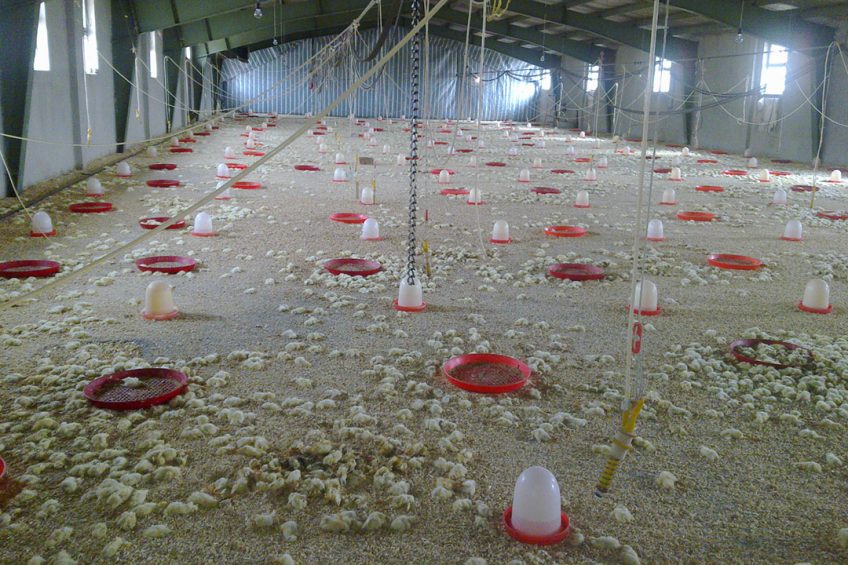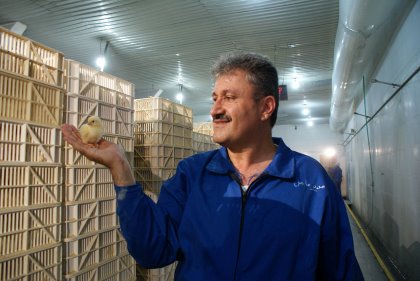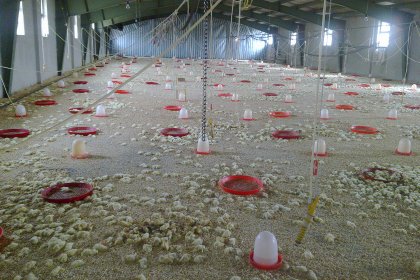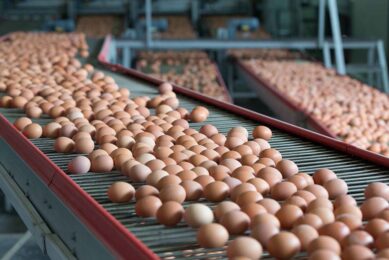Politics hinder growth in Iran’s poultry sector

Iran could be a poultry production power house, with Iranian poultry farmers having the potential to boost exports to 500,000 tons of meat per year, but sanctions and national politics remain an invincible obstacle on this path. Recently this culminated in birds being killed due to lack of feedstuffs entering the country.
The poultry sector in Iran has been struggling for years now. Since the introduction of the first US sanctions against Iran in 2012, the poultry market has suffered. The sanctions have led to increased cost for imported inputs like feed ingredients, and caused sharp price fluctuations on the consumer market. But the industry adapted to the new reality. When sanctions were renewed by US President Donald Trump in 2019 the industry was much better prepared. The country is now self-sufficient in both poultry and eggs and has the highest production effectiveness in the Middle East.
Only our oil industry has a higher turnover and importance…” – Dr Majid Movafegh Ghadirly
Poultry sector huge importance for Iran’s economy
“Only our oil industry has a higher turnover and importance [for the national economy] than the poultry industry,” commented Dr Majid Movafegh Ghadirly, member of the board of the Iran National Poultry Association and chairman of the Iran Feed Industry Association. “Our industry plays a huge role in generating added value. We import 80 – 90% of raw materials and feed ingredients and convert them into products such as poultry, eggs and even sausages and then export them.”
Chicken meat is a major source of protein for Iranians
Iran produces 2.3 million tonnes of poultry meat and 1 million tonnes of eggs per year. In both categories the country is in the list of the top-10 world’s biggest producers. The new sanctions are not likely to slow down the growth output, as the country is set to boost production to 2.6 million tonnes of poultry and 1.1 million tonnes of eggs by 2022, Dr Majid Movafegh Ghadirly said. The sanction pressure on the national economy has even pushed citizens to consuming more poultry, since other sources of protein on the domestic market became less affordable. “Chicken meat is the major source of protein for Iranian people. Due to the high prices of other protein sources, such as red meat and fish, per capita consumption of poultry meat exceeds the global average,” commented Mr. Reza Savari, CEO of local poultry producer Keyvan Morgh Par Talaei Co. “Per capita consumption has risen from 21.8 kilo a decade ago to around 28 kg in 2019 and egg consumption per capita has increased from 9.8 kg to about 11 to 12 kg during the same period,” Dr Majid Movafegh Ghadirly said.
Feed market exposures farmers to sanctions
While the domestic market guarantees a stable demand for poultry products, the feed market exposes the farmers to sanctions. Iran is importing 80 – 90% of raw materials for feed production. The biggest concern was that the re-introduced sanctions could make the production costs in the poultry industry skyrocket and that is exactly what happened recently. “It was announced that due to sanctions money transfers for about 3 million tons of corn and soybean meal were not carried out on time and so the supply of those goods were affected. As a result, the price of animal feed went up,” Dr Majid Movafegh Ghadirly commented. It is estimated that up to 15 million day-old chicks were culled in Iran in April 2020 because of the crisis, the Tehran Poultry Farmers’ Union said. This means that the local hatcheries had no other option left other than to simply kill the day-old chicks, a source on the market explained.

Lack of working international financial mechanisms
Iranian currency rial continues to lose value against major currencies in 2020, reaching as low as 160,000 to the US dollar at one point amid a quickly worsening coronavirus (COVID-19) epidemic, falling oil prices and the sanctions. In February, the rial was trading at 130,000 and 2 years ago, before the re-introduction of sanctions at 40,000 against the US dollars. “The poultry industry in our country is one of the industries that needs a large amount of raw materials to produce animal feed, medicine, vaccines, and disinfectants that must be imported from abroad. The lack of working international financial mechanisms and sanctions make it difficult to get direct access to the [international] supply chain, and as a result, it increases the production costs and eventually disrupts the production cycle,” Reza Savari said.
Unfortunately, chicken meat has always been a political commodity in Iran…” – Dr Majid Movafegh Ghadirly
“The sanctions have had an impact, but the impact was dampened because the government introduced a special government exchange rate for imported feedstuffs,” Dr Majid Movafegh Ghadirly said. This is favouring poultry farming costs, but the government is keen to protect consumers as well. In order to avoid any price hikes on a consumer level, the government has set an upper thresholds for both chicken meat and eggs on the domestic market. “The current price of ready-to-cook chicken in Iran has increased only by 14.1% compared to that of 2002. The average price of eggs has risen by 16% compared to the same year, and giving the investment allocated investments and the risks the industry has to bear, the producers are not satisfied with this at all,” Dr Majid Movafegh Ghadirly said. On top of that, the government is not allowing poultry companies to export poultry. “Unfortunately, chicken meat has always been a political commodity in Iran, and although we have surplus of more than 200,000 tonnes annually, the government is not interested in a sustainable export under the existing sanctions. Therefore, it allows only a short-term export to support producers,” he added.

Export an attractive option
If export were allowed on a sustainable basis, this could give be a real break for Iran’s poultry industry. During the past few years Iran has been exporting poultry to Iraq, Afghanistan, and some CIS countries with the overall poultry import of around 3 million tons per year. “We know that the price of ready-to-cook chicken on the domestic markets of the Iran’s rival countries is twice that of their export price. But by granting export bonuses and subsidies, governments can offset the difference in revenue from exports and from domestic profits. As the saying goes – politics help the economy – but this is not the case in our country,” Dr Majid Movafegh Ghadirly said.
Sanctions inhibit productivity improvements
“Iran’s poultry industry has always been one of the leading industries in the national economy and has always strived to keep up with the world’s scientific and technological standards. But we do see that due to the sanctions, the process of improving productivity and cost reduction has slowed down,” Dr Majid Movafegh Ghadirly said. When it comes to productivity, the local farmers are currently putting a lot of effort into lowering the mortality rate, improving the feed conversion rate (FCR) and optimising the length of the grow out period and end weight. “The average weight at the end of the flock in Iran is 2.6 kg while in the US it is 2.8 kg. Also, the average growing period is 48 days while in the US it is 47 days. The FCR in Iran is 1.9 and, in the US, it is 1.8. Losses in Iran are 10%, while in the US it is only half of that. While continuously improving, Iran is still lagging behind the US in terms of productivity in the poultry industry.
What does the future hold for Iran’s poultry sector?
It is hard to make any forecasts for the future giving the uncertainty in the global economy caused by the Covid-19 pandemic. Poultry farmers in Iran chalked out a package of changes they wish to implement in the coming years in order to make the industry more productive and competitive. “In developing the Iranian poultry industry the government has 2 major objectives; to reform the poultry business environment and to increase the share of large scale poultry production,” Dr Majid Movafegh Ghadirly. The first objective envisages shifting to growing lighter broilers and to increase production of turkey, quail and other alternative poultry species. The second objective is to support the existing trend of building industrial poultry farms. “3 years ago, the share of industrial poultry farms was 15%, and we expect this figure to rise to 45% in the next 2 years,” Dr. Majid Movafegh Ghadirly said.
 Covid-19 Up-date
Covid-19 Up-date
What impact is the pandemic having on the global poultry sector and how are they dealing with it.
Covid-19 brings a lot of uncertainty
As in many countries the poultry supply chain in Iran was severely disrupted by Covid-19, especially as the country was hit hard by the virus. “Since people opt to stay home and not leave their houses because of Covid-19, we do see an increase in demand for poultry products. However, this is offset by business closures, food services, catering, restaurants, and fast food closures, as well as the lack of travel and entertainment. As a consequence, the price of live poultry on the market has fallen strongly,” he added. On this background, the government has announced that it will buy chicken at a guaranteed price to prevent losses to the poultry farmers. That makes the government both a friend and a foe for the Iranian poultry sector.
Join 31,000+ subscribers
Subscribe to our newsletter to stay updated about all the need-to-know content in the poultry sector, three times a week. Beheer
Beheer








 WP Admin
WP Admin  Bewerk bericht
Bewerk bericht